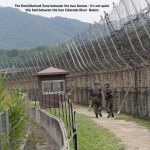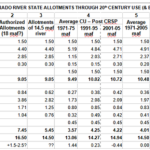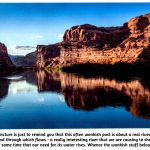
‘Man, during all his wanderings in the struggle for subsistence,
has universally found [the rivers] his friends and allies….
‘By contrast, it is all the more remarkable to meet with
one great river which is none of these helpful things,
but which is a veritable dragon, defiant, fierce,
opposing utility, refusing absolutely to be bridled by Commerce,
perpetuating a wilderness, prohibiting mankind’s encroachments….– Frederick Dellenbaugh
Romance of the Colorado River
My great-grandfather James Short came into the valley of the North Fork of the Gunnison River in 1883, two years after the Ute Indians had been force-marched from the Gunnison River valleys to reservations straddling the Colorado-Utah border. He was 24, and came with his mother Margaret Ann Short Sheppard, his stepfather William Sheppard, brother Frank and sister Cora. The family left Ohio in 1880 for Kansas, then came on to Colorado two years later.
What moved Euro-Americans in the 19th century to load their lives into a wagon, and leave rich well-watered lands where supposedly you could hear the corn growing on a hot humid night, to come to the ‘Great American Desert’? There were undoubtedly practical considerations – second or third sons from a farm that could not be economically divided three or more ways, too many people and too little community, too much industry moving in, et cetera.
But there had to have been, for many of them, the call of a great movement too: Thomas Jefferson’s call to ‘the chosen people of God,’ William Gilpin’s ‘untransacted destiny to subdue the continent,’ the opportunity to take on the challenge of a ‘Manifest Destiny’ mixed with the human desire for adventure. The ‘naked fact’ of the hard work and privation they would face did not dim that calling ‘all radiant with the color of romance,’ as desert poet Mary Austin put it.
The North Fork valley my great-grandfather came into was, and is, a beautiful place – a postcard oasis between the Elk Mountains that ring it upriver and the high desert of the Colorado Plateau it opens onto downriver. Most of the year, the North Fork River meanders docilely through a broad floodplain, bordered by finger mesas that drop fairly abruptly down to the floodplain, a landscape carved out by the river and its smaller tributary streams.
It’s hard to look at the North Fork today in its quiet season and imagine it carving out that whole broad floodplain. But in the spring, when the river swells with snowmelt and silt from the mountains, overrunning and often altering its own channels, that is easier to imagine. A 10,000 year time-lapse film of the North Fork River would would show it slithering back and forth across the valley floor like the Aztec’s feathered serpent, bringing down more bits of the mountains it will eventually move to the ocean, and meandering through and around the debris it keeps pushing downstream.
All of this my great-grandfather would come to experience intimately, as he, his brother and stepfather all took out homesteads on the obviously fertile floodplain. Had they been part of the very select group that actually read John Wesley Powell’s ‘Report on the Lands of the Arid Region,’ they would have known that, with no upstream storage for the spring runoff, ‘these flood-plain lands should not be chosen for irrigation, from the fact that the irrigating canals are liable to be destroyed during flood seasons.’
They also did not come as part of an ‘irrigation district’ of nine or more individuals and families, another Powell recommendation. But they had hardly started their irrigation works, running a gravity-flow ditch from upstream of James’s land out to the base of the steep slope of Stewart Mesa, when an informal company began to form around it, as other families began to settle on the floodplain below them. Rather than each of them digging a ditch from the river (requiring an access ditch across their upstream neighbor’s land), they worked with the Shorts to enlarge their ‘mother ditch,’ to carry water for all of them down along the base of the mesa; from that ditch they each ran laterals to water their own crops and orchards between the mesa and the river.
Thus the Short Ditch became a long ditch; by the time they got around to filing for a water right on the ditch, in 1889, there were 21 names on the decree, for 10.5 cubic feet per second from the river to irrigate 419 acres. They never formally organized an irrigation company, but presumably all shared in the maintenance of the ditch, digging out the silt and trash early in the spring, and collaborating in tasks like the late summer chore of rolling up the pants and getting in the river with rocks to partially dam the river enough to get the low flow up to the headgate. It was a situation that the romantic Jefferson would have loved uncritically; Powell, Jefferson’s man down on the ground, would have shrugged and said, well, they’ve worked it out pretty well so far, but we’ll see….
Living with the river was a little like living with the temperamental god of the Old Testament: it gave life to the land, and took it away – sometimes some of the land with it. In 1887 James had married Frances Wood, daughter of another early settler, and they had three children. The river in the winter was low enough so the children could walk across it to the Midway School, on planks James set up on rocks; their school year ended when the creek began to rise in the springtime. And it would rise and rise, filling their ditches to the brim, then often to overflowing so the floodplain began to look like a lake, water everywhere. James watched nervously in the spring as the river in its power casually meandered ever closer to where he’d built their cabin.
But that only lasted until the snow was off the mountains; the high flows would decline quickly, and by late August – when you really needed the water to finish your crops, ripen your fruit – the river would become a shallow shadow of itself; some years it would be almost impossible to pile up enough rocks across the river to get the water level up to the Short Ditch headgate.
That was life on the North Fork valley floodplain – until 1912, when a big winter in the mountains conspired with an early wet spring, and the river came down in a rushing flood from one side of the floodplain to the other, wiping out most of the family’s orchard and almost taking their cabin. It was enough for James; his homestead allotment extended up onto Stewart Mesa, so he disassembled his log cabin and moved it, log by log, from the floodplain up onto the mesa where it was reassembled. The family joined an officially organized ditch company there – necessary for a ditch whose headgate was considerably farther upstream, with a longer access ditch and a need for some paid management as well as ‘sweat equity’ from users.
The Short family thus escaped the too-frequent spring flooding, but the other challenge was still there – too little water late in the growing season. This is a story common to thousands of settlers throughout the Colorado River region. And both of the big problems – the spring flood and late-summer dryup – grew worse the farther down the river one went. As the river grew larger and more powerful, the opportunities for irrigation also increased, but larger and better funded ditches were needed, with permanent weir dams to keep flows up to headgate level.
In the canyons, where the river had somehow eaten a mile down into the Colorado Plateau, there was almost no irrigation use, or human habitation for that matter. But when the natural river emerged from the canyons, it was a powerful river carrying its cumulative sediment; it ‘spread the wealth’ into the surrounding desert in flows a mile or more wide during the early summer peak, building a platform of the silt, sand and gravel it carried out of the canyons, 20 feet or so above the rest of the desert. This led William Smythe, journalist and leader of the Irrigation Congress movement, to call the Colorado ‘the American Nile.’
It carried so much debris to the Gulf of California in Mexico that it deposited a dike completely across it. When the river was running off the south side of the dike, the hundred miles of cutoff Gulf completely dried up, creating the Salton Sink – until the ever-changing river changed again and flowed off the north side of the dike, partially filling the Sink. It was in the ‘dry Sink’ phase when Euro-Americans began coming into the region, and it proved to have very rich soil when watered, so people began the risky practice of irrigating an area as much as 300 feet below sea level – from a river running well above sea level.
The pressure on the federal government from the Irrigation Congresses described in the last post here continued to grow: the strong and independent yeomen of the West wanted the federal government to help the settlers get water on their otherwise worthless desert homesteads. – the generally maligned ‘gummint’ which had already cleared the land of its First People occupants, and given the yeomen free access to the land.
Requests like that for government assistance were regarded as almost unconstitutional through the 19th century; the American Industrial Revolution was grounded in the conviction that humans operating in a free enterprise system would be guided by Adam Smith’s ‘invisible hand’ to create an open market of human needs being met by human creativity; the government’s role was only to maintain internal and external order to enable that system to operate unhindered (which meant protecting property and entrepreneurial privilege).
By the end of the 19th century, however, this system seemed to most of the people to have led only to an unbalanced Gilded Age for an increasingly powerful and entrenched plutocracy of entrepreneurs who had done very well for themselves but not much for the rest of the society. This was being challenged on many fronts by a growing populist movement of farmers on the land (Grangers) and industrial workers in the cities and mines (unions). A real counterrevolution was brewing among those with the romantic conviction that there should be a government by, for and of all the people.
When Theodore Roosevelt inherited the presidency after the assassination of President William McKinley, he broke ranks in a number of ways with his own upper-class roots and the plutocrats running America, getting the first effective anti-trust legislation passed, and declaring war on the industrial waste of natural resources – America’s earliest national conservation movement. He took huge quantities of the public domain out of the reach of industry, creating more forest reserves and park preserves than any president before or since, and – even more important – established down-on-the-ground management systems for those lands, especially the forests.
He also heard the call for federal help in developing the arid lands of the West, essential if the promise of the Homestead Act was going to be anything more than a romantic fantasy. He lobbied hard for the Newlands Act in 1902 that created a Reclamation Service, as an active arm of the U.S. Geological Survey. To that point, the Geological Survey had been limited to gathering information about the nation’s lands and their resources. With the creation of the Reclamation Service, the government began to act on the information it had gathered, and take an active role in the development of the nation’s land and water resources – a small first step, guided not just by the private-profit motive but also by good science.
This may not have been exactly what the ‘boomer’ element in the Irrigation Congresses wanted – there has always been, in the West (from the time the western frontier was the Appalachian Mountains), an internal contradiction in the laissez faire attitude: ‘Stay out of our business, but send money.’ The Reclamation Service did the opposite, at least at first. It ‘sent money’ – but in the form of long-term, low-interest loans, to groups of farmers needing an irrigation system. And it sent engineers to help them spend the loaned money on carefully-designed irrigation systems.
This Reclamation Service was created just before the death in 1902 of Major John Wesley Powell, who had risked – and lost – his career in the late 1880s on the conviction that the Homestead Act and the agrarian vision at its heart would only work if the federal government took an active role in making it work. The ‘send money and shut up’ faction had defeated him then, but the progressivism taking root under Roosevelt and his minions gave the Agrarian Counterrevolution and Powell’s vision a fighting chance. One hopes he knew this before he died.
But one also doesn’t need to be a hydrologist and engineer to see that just loaning money and expertise to farmers to put in ditches did not really address their two biggest problems: first, that all the river’s water went by too fast and furious in the spring and early summer for them to catch most of it, ‘wasting’ most of it to the ocean; and second, that by late summer, when water was really needed, there was almost none left.
So there was a larger need that the Reclamation Service didn’t address: to control and store that waters of the Colorado River, so that the early-season flood could be contained, and released for late-season irrigation. For this river – this ‘veritable dragon opposing utility, refusing absolutely to be bridled by Commerce’ – almost unimaginable structures were needed.
But America’s fossil-fueled Industrial Revolution was, by the end of the 19th century, producing machines and construction systems unimaginable at the beginning of that century. The 20th century was going to be – something different. As was the Reclamation Service….
***




Ya gotta love the river
Thanks George. Appreciate the history lesson. Not sure what our future will look like, however.
Hey George.
This one really caught my attention. Such an intimate look at the struggles they went through. The Rudibaugh ranch sold and the neighborhood has been getting more attention than it has in a long time. For two days there has been a tractor in the west pasture flinging manure, deepening channels.
The septic variance went through despite resistance from the entire neighborhood. Hydraulic analysis is being done this morning to determine how far up the building site needs to be in a flood plain. Expensive – but perhaps better than being flooded out ?!?!?!
I went and visited the farmers in Mississippi along with other members of the team for two days of site visits, brainstorming etc. I will send you more about that separately.
Love Sarah
Hello George How are you doing. Very good article— all of your writings are excellent—I know about the Short Ditch. I did not know your family built it. Very informative. I will pass on the information to everyone I know. Hank Le Valley
George you are a wealth of captivating knowledge! Thank you for your writings. After reading through this one time I feel the need to revisit it again and again.
I really like the way your weaving this story together. It ties in nicely with the story about the ditches of Boulder County. I hope when you come down that you have a vision of where we are going with this film. At this time I desperately need your guidance.
Silt happens